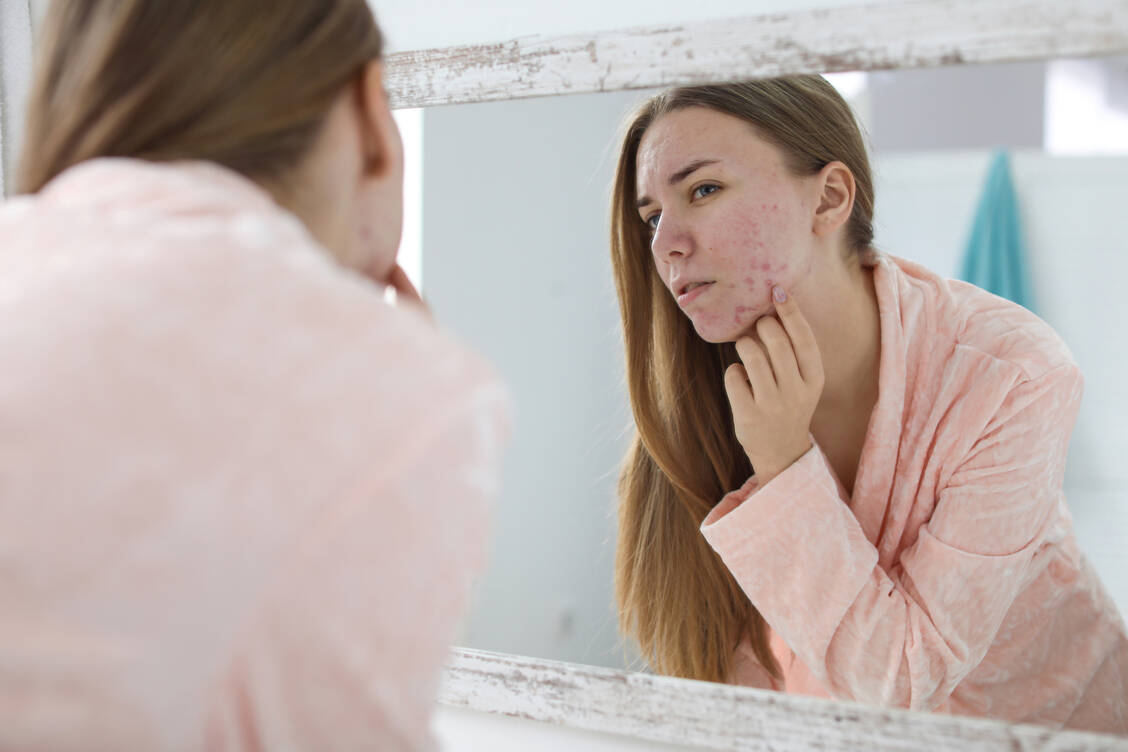Strongly degreasing or de-oiling agents as well as skin tonics with alcohol should be avoided. They stress the skin and can actually fuel sebum production. Mild syndets are available as alternatives. Face and whole-body peelings, for example, with alpha-hydroxy acids (= AHA, for example with glycolic acid, lactic acid, malic acid, tartaric acid, citric acid and mandelic acid) or beta-hydroxy acids (= BHA, for example salicylic acid), counteract the hornification of the pores. The ingredient panthenol promotes wound healing and also soothes inflammation. Some patients have good experiences with anti-inflammatory zinc ointment. Taken orally as a dietary supplement, zinc is also said to relieve acne. Fragrances, UV light and other irritants can increase sebum production.







